

The colour picture of the Flame Nebula, was made from pictures taken in the light from Hydrogen (Hα), Oxygen (doubly-ionised OIII) and Sulphur (singly-ionised SII). The Hα light is red, so I have assigned that to the red channel, OIII light is green so I have assigned that to green; SII light is red (slightly nearer the infra-red than the Hα) but I have assigned that to the blue channel. Below are the individual pictures. These were all taken with the same exposure and were processed identically in RegiStax.
The interesting thing for me is that the emission from Sulphur is significantly stronger than is that from Oxygen. In my limited experience, that is unusual. I don't know what its significance might be.
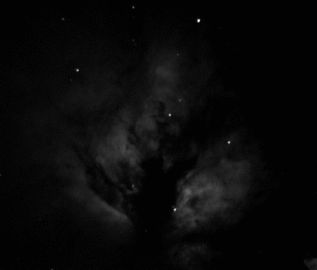 |
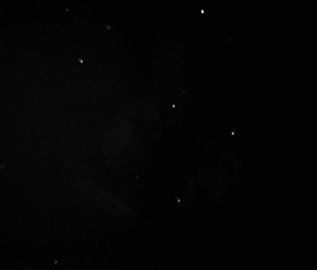 |
| Hydrogen |
Oxygen |
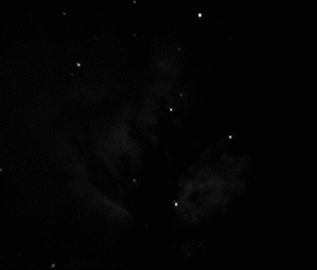 |
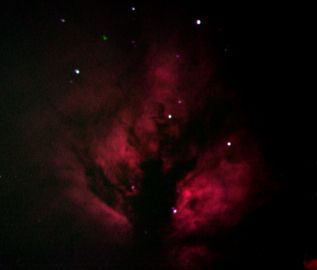 |
| Sulphur |
Composite image |
Following a suggestion from Rob Hemmings on QCUIAG, I took a picture in the infra-red. The nebula is excited by hot stars hidden by the dark matter between us and the nebula which gives rise to the dark lanes in the image. In theory these might show up in the infra-red. My IR-pass filter is stated to pass wavelengths above 652 nm, so should pass Hα light at 658 nm. I do not have a spectrum for it so I don't know how much Hα passes it. So what I have done, below, is to line up the IR and Hα pictures and make the Hα red, and the IR green. So in the composite picture, below, anything green is present in the IR picture but not in the Hα picture. Anything in both pictures will be yellow. It was difficult to judge the exposures but I gave the IR image half the exposure of the Hα. I then adjusted the brightness of the image until most of the nebula was yellow. As you can see, several stars show up green.
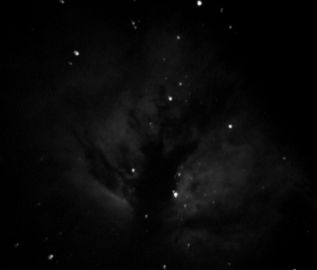 |
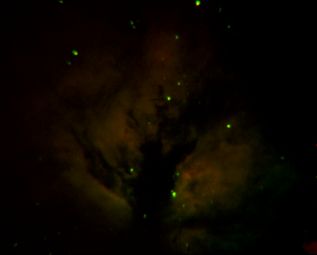 |
| Infra-red |
Hα in red, IR in green |
Finally, here is the composite image full size which may make the colours easier to see. The eagle-eyed will notice some minor misalignments towards the edges (such as the star at the top). I had to refocus the IR image compared to the Hα image and it turned out very slightly larger. The pictures were aligned on the star near the centre of the nebula.
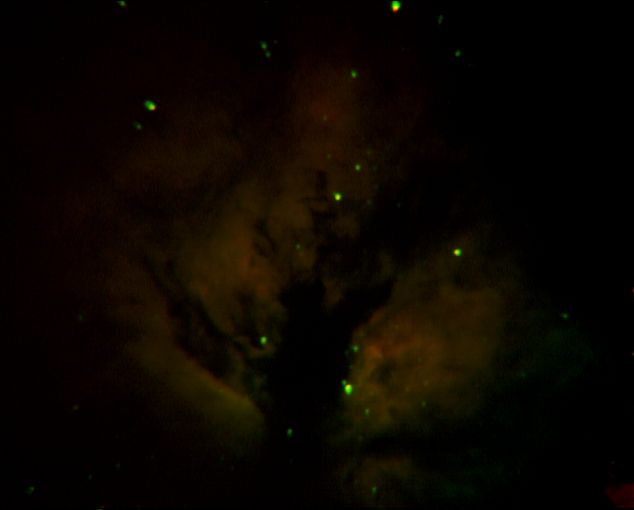 |
Home Back to DSOs